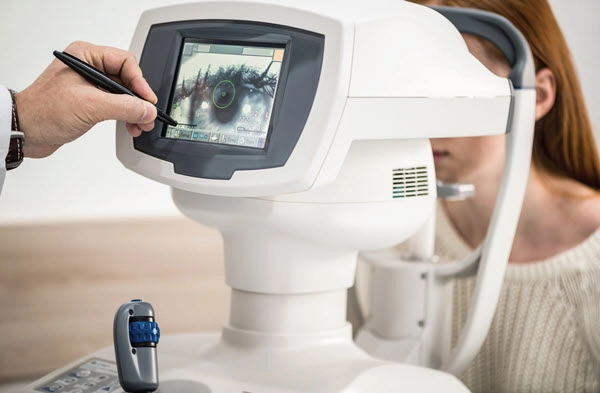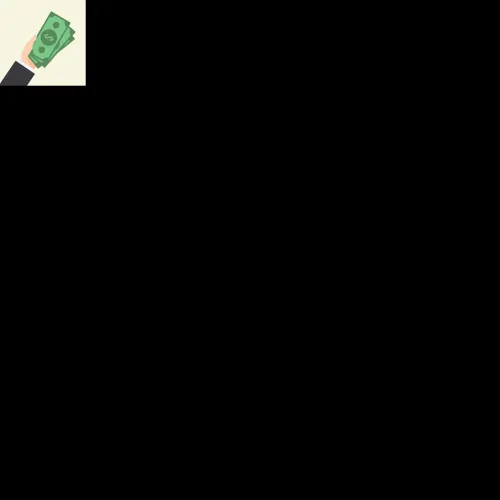Ophthalmology and Optometry Coding Alert
New Diagnosis Codes to Debut for COVID-19, Social Determinates of Health
Plus: You’ll find revised code for Sjogren syndrome with keratoconjunctivitis. If your patients are having residual symptoms from dealing with “long COVID,” you’ll soon have a new way to report this condition. Here’s why: The Centers for Disease Control and Prevention (CDC) has released 191 new codes that will join the ICD-10-CM code set beginning on Oct. 1, 2021 — but that’s not all. The agency also revised and deleted some diagnosis codes, in addition to creating new guidelines for them. To get a handle on the changes most relevant to eye care practices, read on. Check This Revision The first update to the ICD-10-CM code set involves a revision rather than a new code. You’ll find that the descriptor for M35.01 will change from the current listing (Sicca syndrome with keratoconjunctivitis) to a new descriptor: Sjogren syndrome with keratoconjunctivitis. This will likely make your coding choices more streamlined, since most physicians use the term “Sjogren syndrome” rather than referring to “Sicca syndrome.” COVID-19 Updates Continue One major update to the ICD-10-CM code set includes a number of code changes related to COVID-19. “We now have the ability to code for the problems our patients are experiencing as a result of ‘long COVID,’” says Barbara J. Cobuzzi, MBA, CPC, COC, CPC-P, CPC-I, CENTC, CPCO, of CRN Healthcare in Tinton Falls, New Jersey. “All of them are related to a new special purposes code, U09.9 [Post COVID-19 condition, unspecified], which has its own notes and Code First instructions that are also new,” says Kent Moore, senior strategist for physician payment at the American Academy of Family Physicians. The changes include: New ‘Z’ Codes Allow for More Clarity You’ll find many of the newly-debuted codes are located in Chapter 21: Factors influencing health status and contact with health services. Among them are numerous codes that will enable you to document social determinants of health (SDoH) — the way social circumstances affect a patient’s health — in much greater detail. “Keep in mind that SDoH codes, when applicable, bring the patient’s medical decision making (MDM) risk up to moderate, so it is important to document these factors and incorporate them into the note,” Cobuzzi notes. But they’re not the only changes you’ll find in that chapter. Here’s what to expect from next year’s ICD-10. Social Determinants of Health (1): Housing Insecurity In its continuing efforts to facilitate documentation of SDoH, the Centers for Disease Control and Prevention (CDC) has added a number of new codes to the existing Z59.- (Problems related to housing and economic circumstances) codes. Code Z59.0 (Homelessness) is now broken out to three codes: Additionally, “the CDC has broken out Z59.8 (Other problems related to housing and economic circumstances) into a number of new codes. You will now be able to document when a patient’s health is affected by housing instability, but the patient is currently not homeless, by adding sixth characters to Z59.81- (Housing instability, housed),” Moore adds. So, you will now be able to report: Synonyms for all the Z59.81- codes tell you that you can use them when a patient is dealing with problems due to a foreclosure on home loan, is past due on rent or mortgage, and/or has undergone unwanted multiple moves in the last 12 months. Confusingly, the CDC moved similar synonyms (“foreclosure on loan,” “isolated dwelling,” and “problems with creditors,”) that were originally assigned to what is now parent code Z59.8- to new code Z59.89 (Other problems related to housing and economic circumstances). Social Determinants of Health (2): Food Insecurity You also now have two codes to address health determinants based on lack of, or lack of access to, food: Z59.41 (Food insecurity) (defined as occurring when “food intake of household members is reduced and their normal eating patterns are disrupted because the household lacks money and other resources for food,” according to the U.S. Department of Agriculture (Source: www.ers.usda.gov/topics/food-nutrition-assistance/food-security-in-the-us/definitions-of-food-security.aspx)) and Z59.48 (Other specified lack of adequate food), which is accompanied by the synonyms “inadequate food” and “lack of food.” For the Z59.4- codes, Excludes1 codes for effects of hunger (T73.0), inappropriate diet or eating habits (Z72.4), and malnutrition (E40-E46) will now become Excludes2 codes, with deprivation of food (T73.0) added to the list. Additionally, “parent code Z59.4 gets a name change from ‘Lack of adequate food and safe drinking water’ to ‘Lack of adequate food’ with the synonym ‘Inadequate drinking water supply’ deleted. But to address that issue, you’ll have a new code, Z58.6 [Inadequate drinking-water supply], which is accompanied by the synonym ‘Lack of safe drinking water,’” Moore notes. Immunization Counseling Lastly, one new code that will probably get an immediate workout at most medical practices this year is Z71.85 (Encounter for immunization safety counseling). The ICD-10 code will pair with immunization administration service codes, including the numerous new COVID-19 vaccine administration codes, when your provider offers education regarding the safety of a particular vaccine. It may also be appropriate in some situations where vaccine counseling occurs, but no vaccine is administered, such as 99401-99404 (Preventive medicine counseling and/or risk factor reduction intervention(s) provided to an individual (separate procedure) …). The code comes with Code also instructions to code an encounter for immunization (Z23) or immunization not carried out (Z28.-) as applicable, along with an Excludes1 note that you should use the encounter for health counseling related to travel (Z71.84) code instead if your provider’s immunization safety counseling is travel-related. For the full list of added, revised, and deleted ICD-10 codes for 2022, go to www.cdc.gov/nchs/icd/icd10cm.htm, click on the ICD-10-CM FY 2022 Addenda PDF 2022 link, and download the Table and Index zip file.

Related Articles
Ophthalmology and Optometry Coding Alert
- ICD-10-CM Coding:
New Diagnosis Codes to Debut for COVID-19, Social Determinates of Health
Plus: You’ll find revised code for Sjogren syndrome with keratoconjunctivitis. If your patients are having [...] - Part B Payments:
Latest Fee Schedule Proposal Includes Updates to Telehealth Policies
But conversion factor cuts could impact all medical practices if proposal is finalized. Eye care [...] - Procedures:
Collect for Punctal Plug Procedures With These Tips
Hint: Procedure code isn’t dependent on type of plug. One way eye care specialists can [...] - Check These Tips When Fighting Punctal Plug Denials
You’ve coded what you’re sure is a bulletproof claim for an E/M code and punctal [...] - You Be the Coder:
Can You Code a PAM Test?
Question: Is 95930 the correct procedure code for potential visual acuity meter? Can this code [...] - Reader Questions:
Know When Dye Is Included
Question: One of our physicians wants to know if we can bill for indocyanine-green dye. [...] - Reader Questions:
Get to Know Scribe Rules
Question: We just started having one of our medical assistants act as a scribe for [...] - Reader Questions:
Query Physicians Without Adding Leading Questions
Question: Thank you for your article in Vol. 24, no. 7 on documentation tips. We [...]




